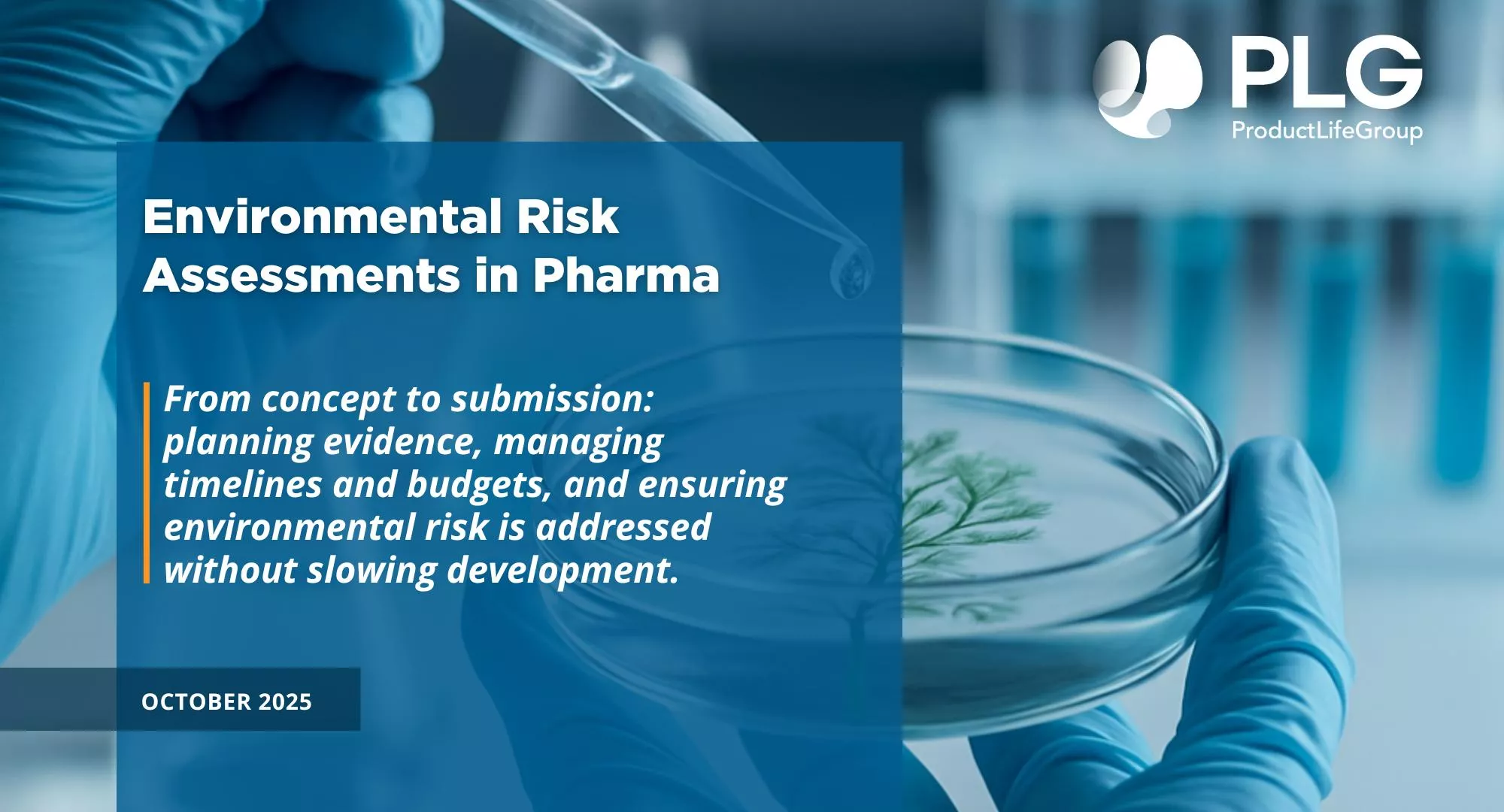
Environmental Risk Assessments in Pharma: Here’s What You Need to Know
17 october 2025

As the pharmaceutical industry pushes forward with innovation, an unexpected challenge is surfacing in the regulatory landscape: the environmental footprint of medicinal products. Increasingly, active pharmaceutical ingredients are being detected in surface water and groundwater and in the water that flows from taps. Regulators are responding urgently; for any company aiming to secure European market access, the message is now unmistakably clear.
Environmental Risk Assessments (ERAs) are to be no longer peripheral to the product development. They are to be essential.
The New Regulatory Reality
From September 2024, the European Medicines Agency’s revised ERA guideline becomes fully enforceable. This guideline mandates a stepwise evaluation of the potential environmental impact of any new medicinal product. That process begins with an initial risk and hazard assessment of each of the active substances in the product. In most of the cases, if the predicted concentration in surface water reaches or exceeds 0.01 micrograms per litre and/or the octanol/water partitioning coefficient (log Kow) of the active substance is higher than 4.5 , the ERA advances to a second phase of more rigorous testing. These Phase II studies assess physioco-chemical, ecotoxicological and fate properties of the active substances. In addition, active substances with a specific mechanism of action such as endocrine active substances, antibacterials or antiparasitic require a tailored risk assessment strategy.
Completing a full package of ERA Phase II studies can take up to two years. This timeline cannot be treated as an afterthought for companies aiming to file for marketing authorisation. The assessment must run in parallel with clinical development. Waiting until the end of Phase III is no longer viable.
Strategic Implications for Market Access
This evolution in environmental oversight introduces a strategic dimension beyond regulatory compliance. For one, failure to complete an ERA on time can delay authorisation, an outcome that undermines investor confidence, strains commercial partnerships, and throws off product launch timelines. But it also influences reputation. Environmental scrutiny of pharmaceuticals is no longer limited to scientific circles. Consumers and payers are becoming more aware, especially regarding substances with endocrine-disrupting potential.
The implications extend to generics, biologics and biosimilars as well. While generic applications may be able to reference existing ERAs, this is only possible if the applicant owns a letter of access to this data. Otherwise, the applicant should provide a complete literature review compliant with the current standards. However, biotech companies working with modified peptides or proteins may justify exemption from full ERA studies based on the discussion of the biodegradability of the active substance.
No Room for Shortcuts
Some companies hope to avoid experimental studies by leaning on publicly available data. In principle, that is permitted. In practice, it is not so simple. Regulatory authorities will not accept summary documents such as public assessment reports unless the applicant can access the underlying studies. Literature-based strategies are allowed only when they follow a transparent, systematic methodology and when the sources meet scientific reliability up to date standards.
In other words, shortcuts based on assumption or convenience no longer work.
An Executive-Level Priority
For leadership teams navigating late-stage development or planning regulatory filings, environmental risk must be treated as a core component of the strategy. It is not just a task for regulatory affairs or toxicology experts. It has become a boardroom concern that intersects with timelines, resource planning, risk mitigation, and stakeholder communication.
Environmental Risk Assessments are not designed to slow innovation. But ignoring them will. For companies that plan ahead, they can integrate ERA smoothly and cost-effectively into the development plan. For those that do not, it risks becoming a barrier at the final gate.
The shift is already underway. The only question is whether your team is treating it with the urgency it requires.
How Productlife Group/Zwiers Regulatory Can Help
We offer strategic support in navigating the Environmental Risk Assessment process, ensuring alignment with your development timeline and regulatory goals. From Phase I screening to coordinating complex Phase II studies, our team helps you meet EMA requirements efficiently and avoid delays. With deep scientific expertise and hands-on experience, Zwiers /PLG ensures your ERA dossier is complete, defensible, and submission-ready.
Register to our news and events
Go to our Events to register
Go to our News to get insights
